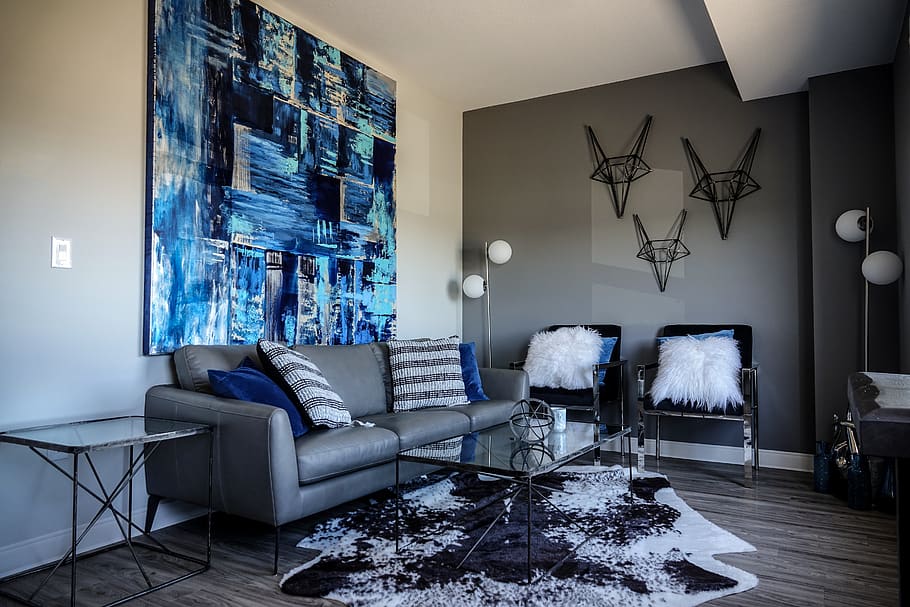Wallpaper is an excellent way to add texture, color, and personality to a room. However, before you can start hanging wallpaper, you need to ensure that your wall is properly prepared. Proper preparation will help to ensure that your wallpaper will adhere well, look smooth, and last for years to come. In this article, we’ll take a closer look at the steps required to prepare a wall for wallpaper.
Evaluate the Wall
The first step in preparing a wall for wallpaper is to evaluate the condition of the wall. This step is essential because any cracks, holes, or other imperfections can cause problems when hanging wallpaper. Therefore, it is important to take the time to inspect the wall for any defects before proceeding with wallpaper installation. Here are some things to look for:

- Cracks: Cracks are a common problem in walls and can be caused by a variety of factors, such as settling, temperature changes, or moisture. It is essential to fix any cracks before hanging wallpaper because they can cause the wallpaper to lift or bubble over time. To fix cracks, use a putty knife to scrape off any loose material, then fill the crack with spackling paste. Once the spackling is dry, sand it smooth with a fine-grit sandpaper.
- Holes: Holes can also be caused by a variety of factors, such as nails, screws, or other objects. Like cracks, holes must be filled before hanging wallpaper to avoid the wallpaper from tearing or falling off over time. To fill holes, use spackling paste and apply it with a putty knife, then sand it smooth once the spackling is dry.
- Loose plaster: If you have an older home, you may find that the plaster is loose in some areas. Loose plaster can cause problems when hanging wallpaper because it can cause the wallpaper to lift or bubble. To fix loose plaster, reattach the plaster to the lath strips behind it using plaster washers and screws.
Remove Old Wallpaper
If there is old wallpaper on the wall, it is essential to remove it before installing new wallpaper. Removing old wallpaper is necessary because it can cause problems when installing new wallpaper, such as the wallpaper not adhering well or bubbles forming underneath. Here are the steps to remove old wallpaper:
- Use a scoring tool to make small holes in the wallpaper. The holes allow the wallpaper stripper solution to penetrate the wallpaper, making it easier to remove.
- Apply a wallpaper stripper solution to the wallpaper using a paint roller or spray bottle. The solution helps dissolve the wallpaper paste, making it easier to remove.
- Let the solution sit for a few minutes, then use a scraper to remove the wallpaper. Work in small sections, and be careful not to damage the wall underneath.
- Once the wallpaper is removed, use a sponge or cloth to clean off any glue residue that’s left behind. It is important to remove all residue before installing new wallpaper to ensure the wallpaper adheres well.
Patch Any Holes or Cracks
After removing old wallpaper or fixing any defects in the wall, it is essential to patch any holes or cracks. This step is necessary because any holes or cracks in the wall can cause the wallpaper to tear or bubble. Here’s how to patch any holes or cracks:
- Use a putty knife to apply spackling paste to the hole or crack. Be sure to apply enough spackling to fill the entire area.
- Smooth the paste with the putty knife, then let it dry completely. Drying time will depend on the size of the patch and the type of spackling used.
- Once the spackling is dry, use a fine-grit sandpaper to sand it smooth. Sanding will help create a smooth surface for the wallpaper to adhere to.
Clean the Wall
Before installing new wallpaper, it is essential to clean the wall thoroughly. Cleaning the wall will remove any dust, dirt, or residue that may be present on the wall. A clean wall will ensure that the wallpaper adheres properly and lasts longer. Here’s how to clean the wall:
- Start by using a soft brush or vacuum cleaner to remove any loose dirt or dust from the wall.
- Next, use a sponge or cloth to wipe down the wall with warm water and mild soap. Be sure to wring out the sponge or cloth well to avoid saturating the wall.
- Rinse the wall with clean water to remove any soap residue, then use a clean cloth or towel to dry the wall completely.
Apply Wallpaper Primer
Applying wallpaper primer is an essential step in preparing a wall for wallpaper. The primer helps the wallpaper adhere better to the wall and prevents the wallpaper from peeling or lifting over time. Here’s how to apply wallpaper primer:
- Choose a high-quality wallpaper primer that is appropriate for the type of wallpaper you are using. Some wallpaper primers are designed specifically for use with certain types of wallpaper, such as vinyl or fabric.
- Apply the primer to the wall using a roller or brush. Be sure to apply the primer evenly and cover the entire wall.
- Let the primer dry completely before installing the wallpaper. Drying time will depend on the type of primer used and the humidity in the room.
Measure and Cut Wallpaper
Once the wall is prepped and the primer is dry, it’s time to measure and cut the wallpaper. It is important to measure carefully to ensure that the wallpaper fits the wall properly and looks seamless. Here’s how to measure and cut wallpaper:
- Measure the height and width of the wall using a measuring tape. Be sure to add a few extra inches to the height and width to allow for trimming and adjustment.
- Roll out the wallpaper on a clean surface and use a straight edge and a sharp utility knife to cut the wallpaper to the correct size. Be sure to cut the wallpaper carefully to avoid any tears or damage.
Apply Wallpaper Adhesive
Before hanging the wallpaper, it is essential to apply wallpaper adhesive to the back of the wallpaper. Wallpaper adhesive helps the wallpaper adhere to the wall and ensures a smooth and even finish. Here’s how to apply wallpaper adhesive:
- Choose a high-quality wallpaper adhesive that is appropriate for the type of wallpaper you are using. Some wallpaper adhesives are designed specifically for use with certain types of wallpaper, such as vinyl or fabric.
- Use a paint roller or brush to apply the adhesive evenly to the back of the wallpaper. Be sure to cover the entire surface of the wallpaper with adhesive.
- Let the adhesive sit for a few minutes to become tacky before hanging the wallpaper.
Hang the Wallpaper
Once the wallpaper adhesive is applied, it’s time to hang the wallpaper. Hanging wallpaper can be a time-consuming and delicate process, so it is important to take your time and work carefully. Here’s how to hang wallpaper:
- Start by hanging the first strip of wallpaper at a corner of the room. Use a plumb line or level to ensure that the wallpaper is straight.
- Smooth the wallpaper onto the wall using a wallpaper brush or squeegee. Be sure to work out any bubbles or wrinkles as you go.
- Continue hanging the wallpaper one strip at a time, overlapping each strip slightly to ensure a seamless finish.
- Once all of the wallpaper is hung, use a sharp utility knife to trim any excess wallpaper at the top and bottom of the wall.
Final Touches
After the wallpaper is hung, it’s time to make any final touches. This step may include painting or touching up any areas around the edges of the wallpaper, as well as cleaning up any excess adhesive or debris. Here’s how to make any final touches:
- Use a damp sponge or cloth to clean up any excess wallpaper adhesive or debris from the surface of the wallpaper and the surrounding area.
- Use a small paintbrush to touch up any areas around the edges of the wallpaper where the wallpaper may not have adhered properly or where the primer or wall may be visible.
- Let the wallpaper dry completely before moving any furniture or accessories back into the room.
Conclusion:
Preparing a wall for wallpaper can be a time-consuming process, but it is essential for ensuring a smooth and seamless finish. By following these steps, you can prep your wall for wallpaper and achieve a professional-looking result. Remember to take your time, measure carefully, and work with precision to ensure the best possible outcome.











